Supplied
Explore The East Coast Of Tasmania With Ange Boxall
In partnership with Tasmania's Off Season, Rolling Stone had the pleasure of speaking with Tasmanian songstress and east coast local Ange Boxall about what she finds most enchanting about the region she calls home
This gourmet food bowl of a region is perhaps most famous for the larapuna / Bay of Fires, with its clear azure seas and granite rocks splattered in orange lichen, or the alluring white sands of Wineglass Bay. However, this spectacular region has so much more to offer. In partnership with Tasmania’s Off Season, Rolling Stone had the pleasure of speaking with Tasmanian songstress and east coast local Ange Boxall about what she finds most enchanting about the region she calls home.
It’s a frosty winter’s morning, but the sky is piercing blue, and the sun begins to permeate my cold body. We arrive at Tasman Sea Salt, where we meet Ange. As we pull up, Ange is beaming at us and waving. As I begin talking with her, I am enamoured by her warm spirit, infectious laugh, and smile. Ange lived between London and Nashville for over a decade before moving back home to her dream location on the east coast of Tasmania with her Family. When asked to describe her musical style, Ange cites country and female power rockers from the 1970s and ‘80s as significant influences. “It’s sort of a country style with a fleck of Fleetwood Mac, so it’s described as more of an Americana sound than country,” she says. “In my thirties, my music was more about love and relationships,” she muses. “Now in my forties and moving back to Tasmania, I feel like it’s gone back to being sort of raw and wild, and I do feel like the landscape, the air, the elements all have an effect. I really do.” She tells me that her music has taken on a broader world perspective and is less intrapersonal than before. “The new album (Skipping Stones) has many protest references about various things that I feel strongly about,” she says.
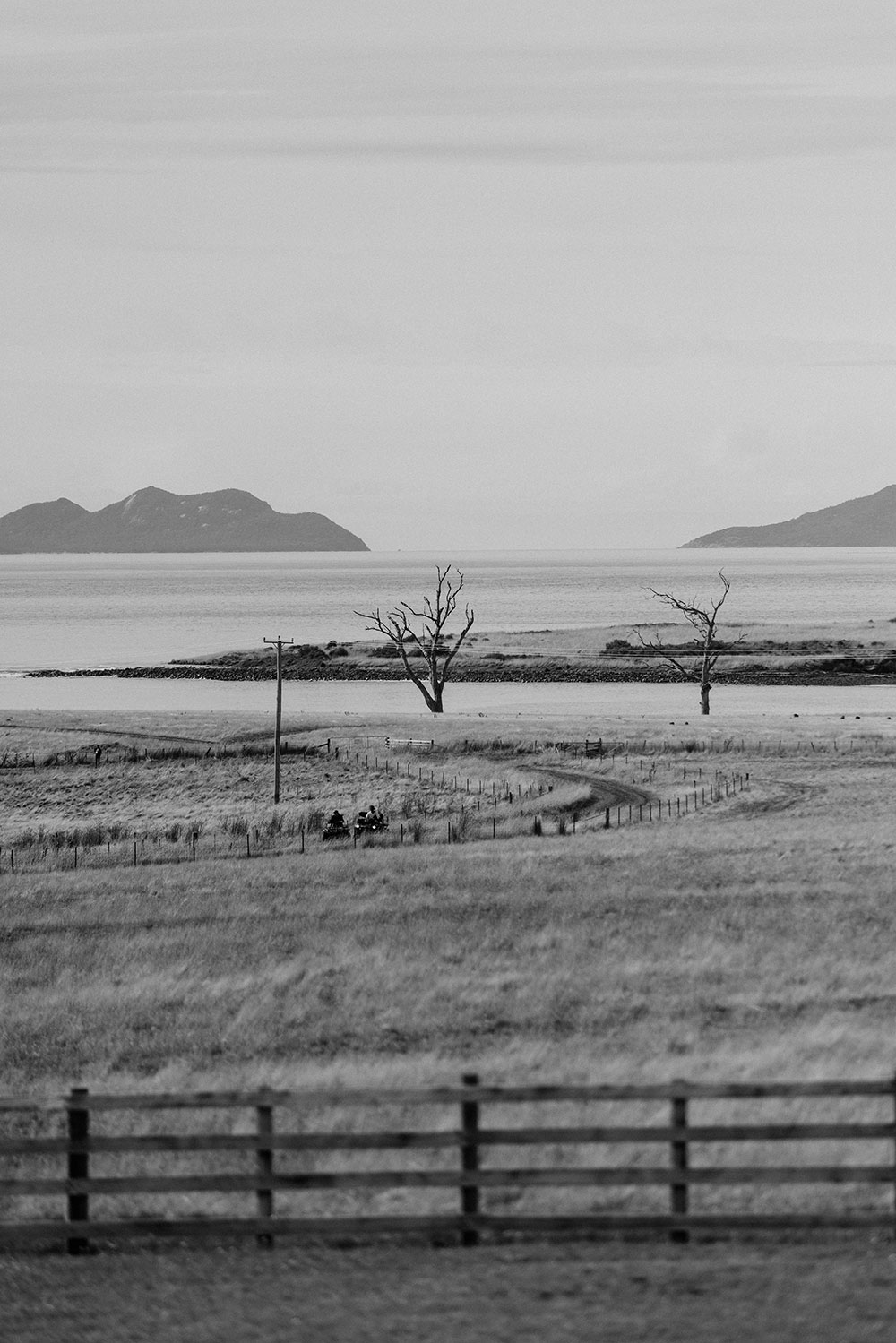
Photography: Jesse Hunniford
“The album has been a couple of years in the making, and I was writing it over a five or six-year period,” she says. “I’m a mum, so I’m busy and have various other projects. One of them is a festival called Echo, which stands for East Coast Harvest Odyssey. It sits around the time of harvest, and it’s all about switching off and switching on the senses”. “It’s inspired by that love I have of sitting around a fire, drinking wine and sharing some laughs and telling yarns. Which is all fabulous, but it also goes deeper than that; we have many first nations peoples telling their stories, and it is culturally very rich”.
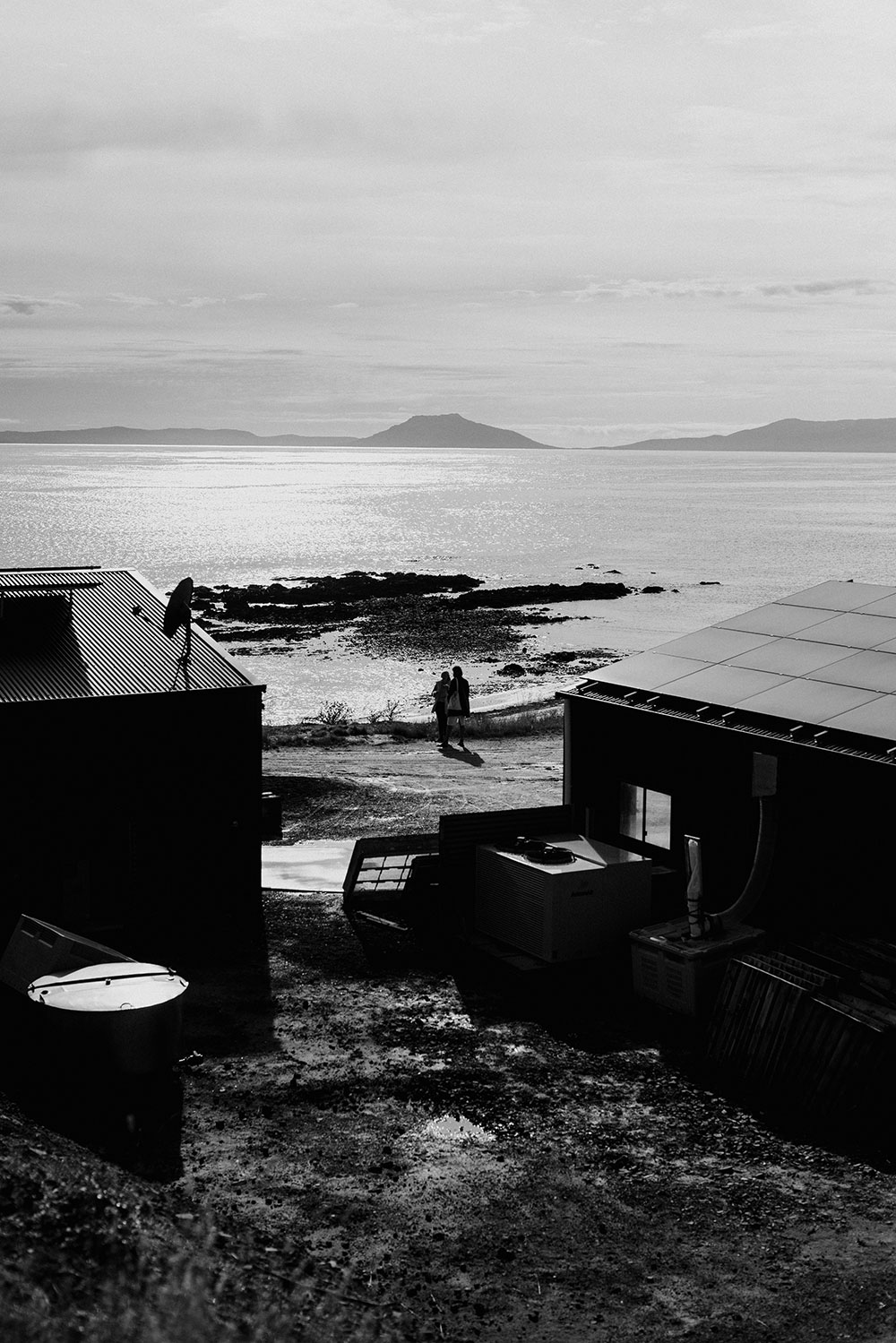
Photography: Jesse Hunniford
Ange is wearing a Sherpa jacket and tells me it’s her go-to when she wants to make sure she doesn’t feel the cold. She tells me this is her favourite time of year, and I ask her what she loves most about it. She tells me that she feels the most creatively inspired in the wintertime. “Maybe it’s because you’re more contained inside,” she ponders. “I like to sit by a window so that I can be warm inside, but I’ll be looking out at the beautiful blue skies; it’s conducive to writing or creating anything,” she tells me. “I love watching a fire, I don’t watch much television, but I could sit and watch a fire all night. And I actually love going to the beach in winter even more than I do in summer – it’s just so stunning when it’s misty and gloomy with dramatic skies.” Her face lights up like a child’s when asked about her favourite beaches. “I really love Spiky Beach,” she says. “There are beautiful rock formations, and you can almost imagine little fairies living there. It can get a wild surf break coming in, and you get these amazing black rocks with orange lichen on them. There’s a cave there, and sometimes I sit in there and just ponder. I love all the national parks,” she says. “Douglas Apsley is really stunning. It has a lovely big swimming hole and beautiful walks along the river’s edge. I love Wineglass Bay, it’s just magnificent, and I never get sick of it. As you pull in, you see the Hazards mountains, and they’re something else. Really stunning”.
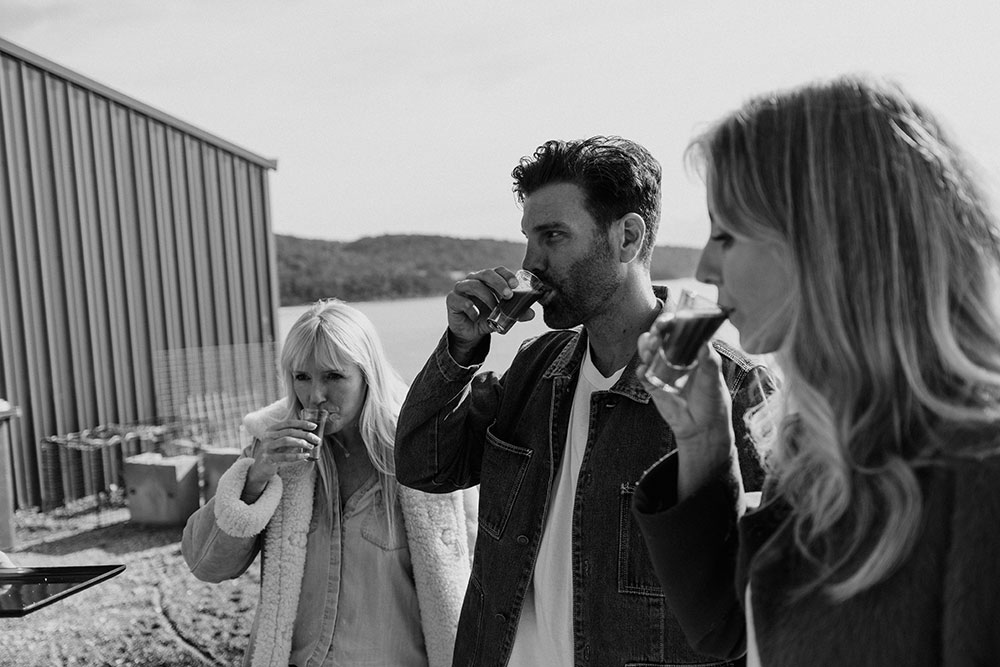
Photography: Jesse Hunniford
We are interrupted to let us know it’s time to take a tour of the saltworks. We look over towards the steel shed whirring with machinery, and I meet the gaze of Chris Manson, who co-founded Tasman Salt with his wife Alice Laing. He points out over Mayfields Bay and says, “That’s 99% of our marketing right there,” and I can understand why. The translucent blue water is hemmed by golden-hued farmland, and it’s no surprise that we’re looking out at some of the most pristine oceans in the world. Chris offers us a shot of warm, umami mushroom broth seasoned with their wakame seaweed salt. “That’s delicious,” says Ange, and I couldn’t agree more.
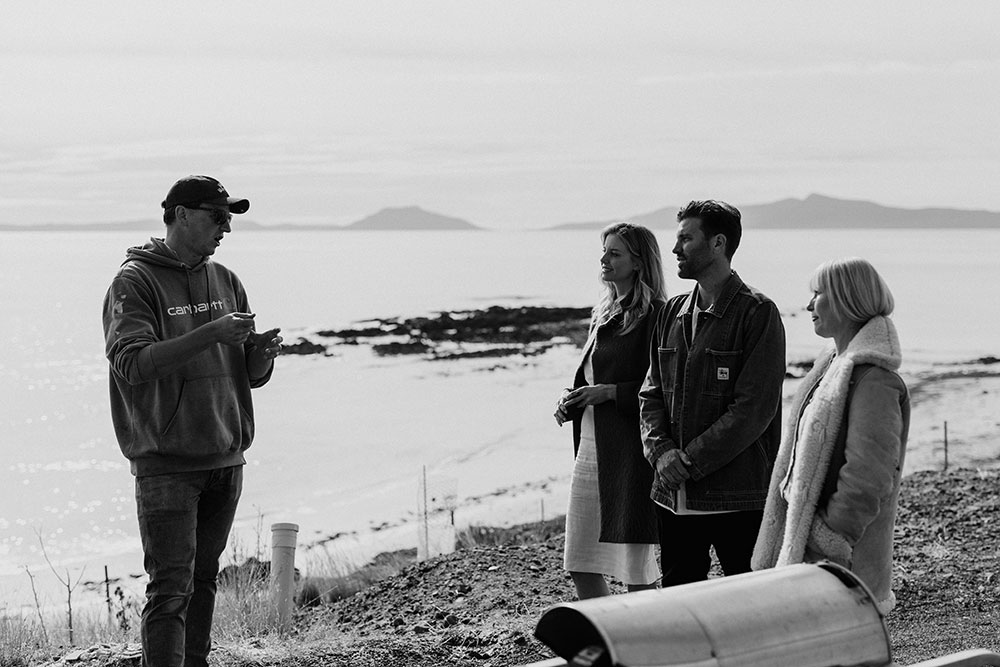
Photography: Jesse Hunniford
Chris and Alice have been harvesting sea salt from Tasmania’s pristine east coast since 2013, producing pure white flakes with an incredible depth of flavour. They offer a ‘Salt Sommelier’ tour, which gives visitors a chance to learn about their unique salt harvesting process. You’ll also learn how salt impacts flavour while sampling a menu of small bites that pair their sea salt with locally sourced produce and optional wine pairing from local winery Mayfield Estate.

Photography: Jesse Hunniford
Bellies full and eager to see more of this beautiful state, we continue on. We take a 20-minute ferry ride from Triabunna, a small town on Tasmania’s east coast and arrive at Maria Island National Park. Since the island is only accessible by boat, and cars are not allowed, it feels uninhibited and remote. We are told we can explore on foot or on a push bike and choose the latter so we can see as much of the island as possible.
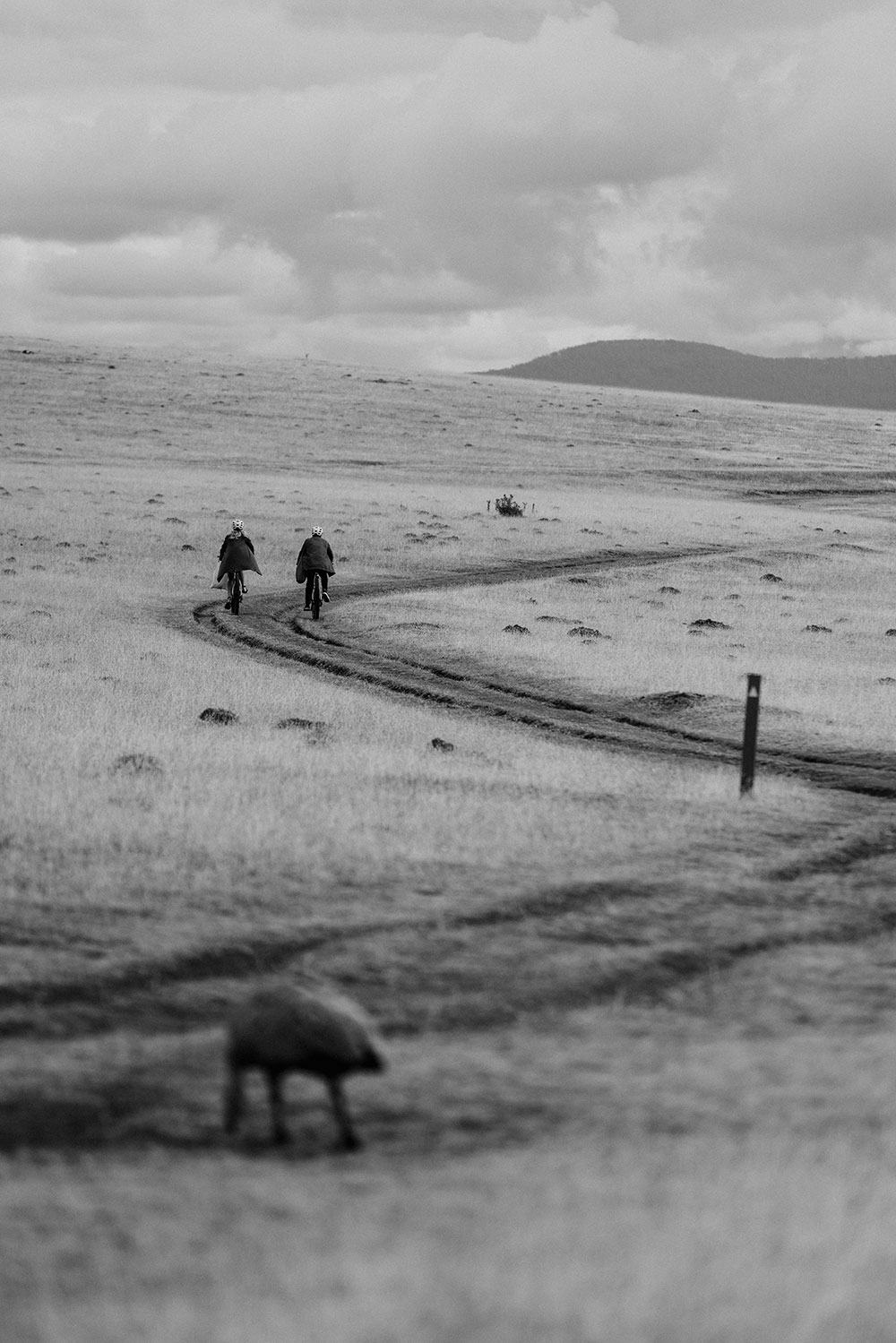
Photography: Jesse Hunniford
As we ride through an enchanting eucalyptus forest, wombats, wallabies, and forester kangaroos abound. The stillness of the island allows for the flowing music of birdsong. I look up at the tiny feathered creatures that decorate the sky. We are told that Maria Island has 125 bird species, with 11 of Tasmania’s endemic species found here, including the endangered swift parrot and forty-spotted pardalote. Tasmanian devils and pademelons thrive on the island and are usually spotted at dusk or dawn. We ride past Shoal Bay, and I am mesmerised by the clear blue water and seclusion of the bay. These vast stretches of water are home to abundant marine life, including seals, whales and dolphins.
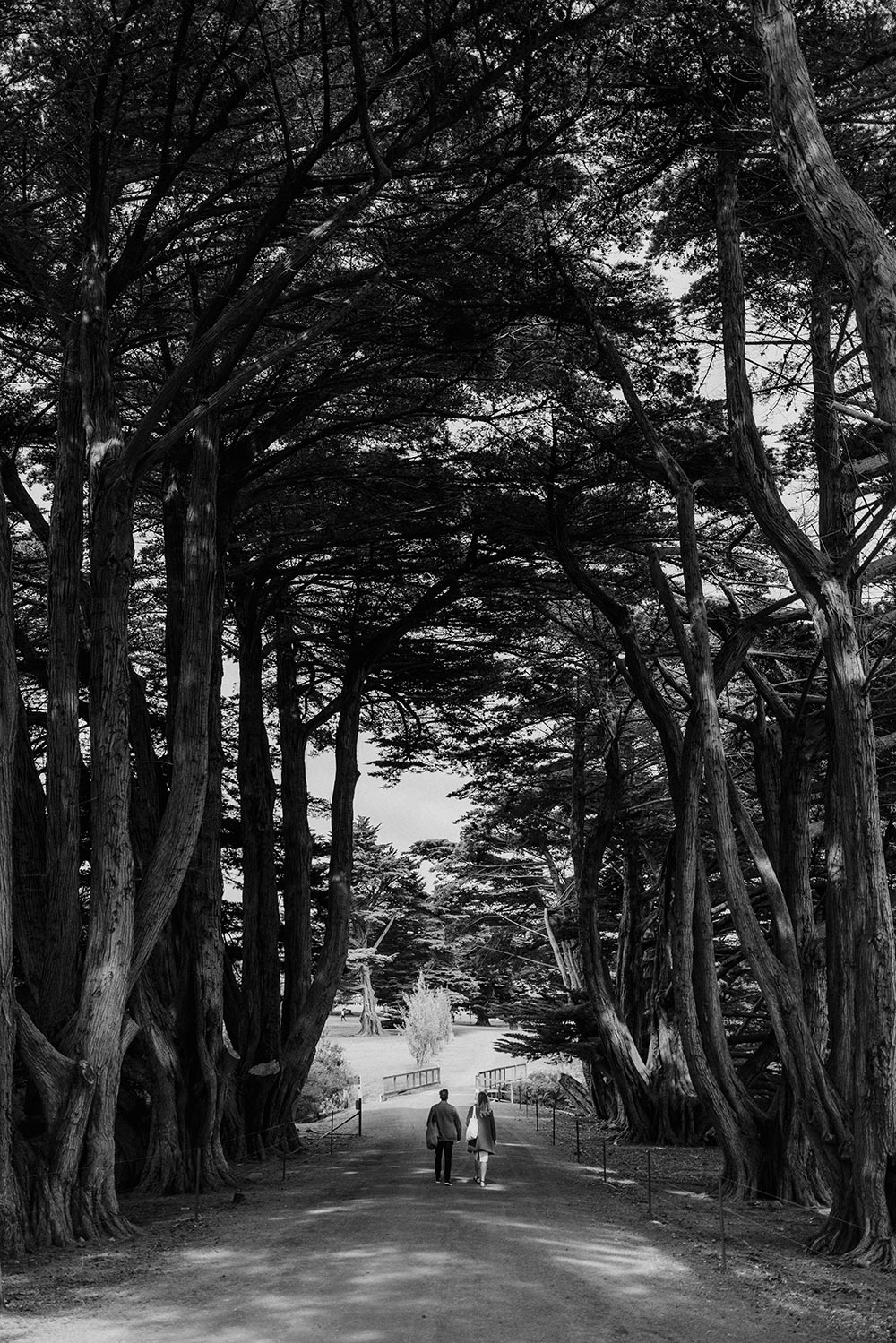
Photography: Jesse Hunniford
As we look out over Hopgrounds Beah, clutching at the swim caps and towels offered to us by the captain of Encounter Maria ferry, we decide this is where we’ll take a cold plunge into the ocean. We look out at the shimmering sand that sweeps around the edge of the gently ebbing blue sea. I strip down to my bathers, then begin to run into the water, letting the cold envelope my body before my mind can protest. As the chilly water wraps around my body like a blanket, there is a sense of discomfort for a few seconds before my body begins to acclimatise. Out in the distance, streams of throbbing light saturate the water’s surface with a golden haze, and I feel completely in awe of the surrounding beauty. The water has invigorated me and enlivened my soul. I emerge from the water feeling calm and present, allowing the moment to take hold of me.
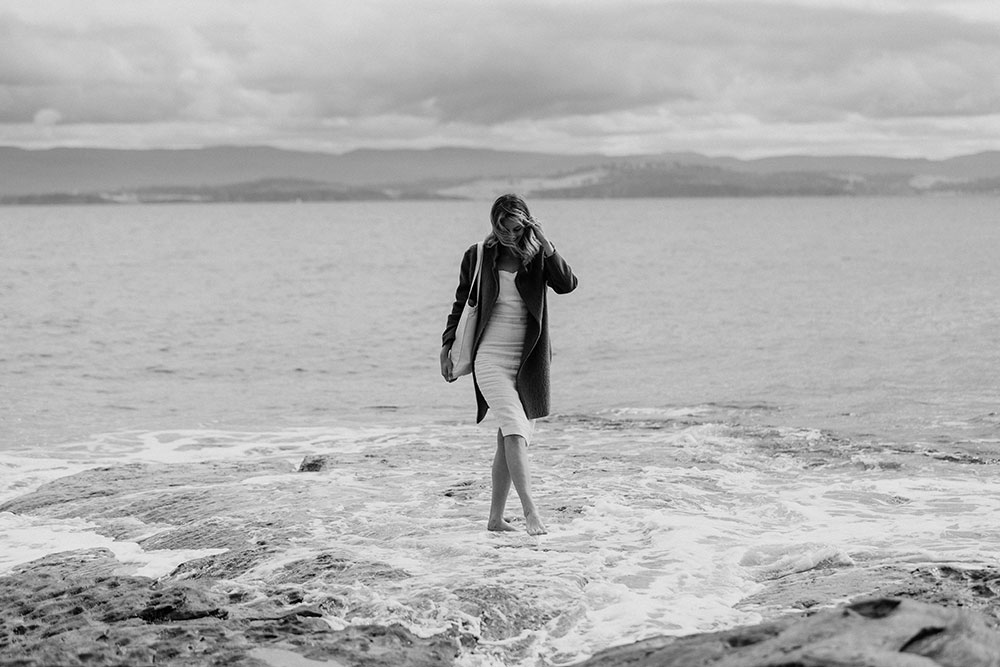
Photography: Jesse Hunniford
As we ride back towards the ferry, the rugged summit of Bishop and Clerk begins to appear above cliffs that plummet to the sea. With only a few hours on the island, we have only scratched the surface. We are told it is possible to climb both Mount Maria, which at 711m is the island’s highest point, and Bishop and Clerk,, which is a slightly lower peak. Both treks rise through abundant bushland and end with a more challenging clamber over rocky slopes to the summit.
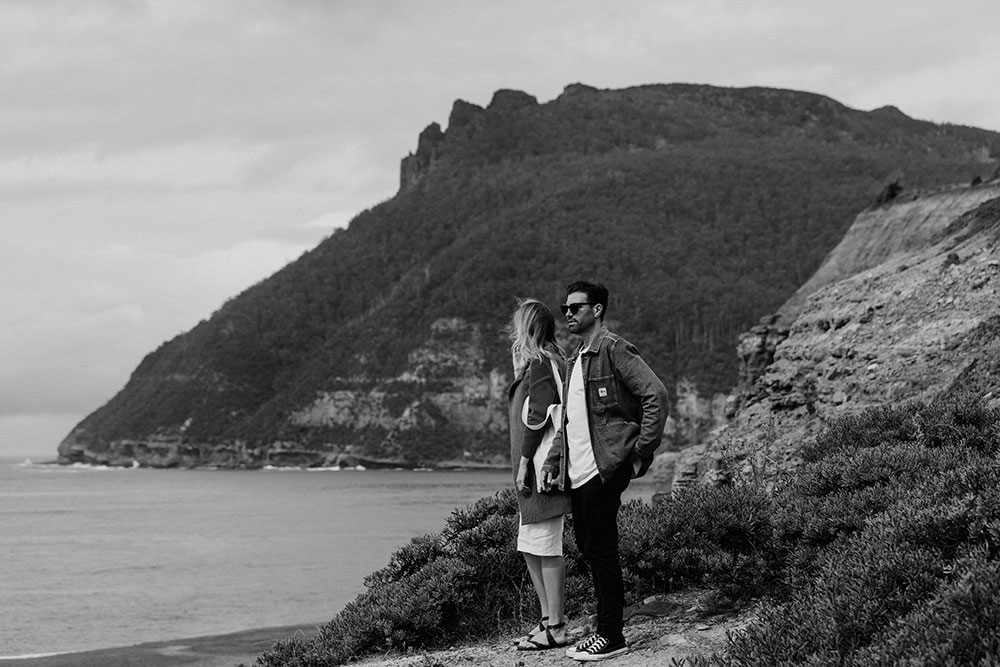
Photography: Jesse Hunniford
Ange was as inspiring a guide to the east coast as her songwriting suggests, with an incredible passion and depth of knowledge for this beautiful region.
This article is produced by Rolling Stone in partnership with Tourism Tasmania. Explore more wild, weird and wonderful experiences during Tasmania’s Off Season.







































